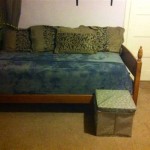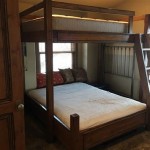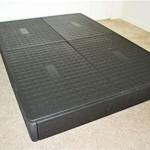Essential Aspects of At What Age Can A Child Sleep In Loft Bed Plans
Ensuring the safety and well-being of children is of utmost importance, especially when it comes to their sleeping arrangements. Loft beds, known for their space-saving design and playful aesthetic, offer an exciting alternative to traditional bed frames. However, it's crucial to consider specific factors to determine the appropriate age for a child to sleep in a loft bed.
This article explores the essential aspects of At What Age Can A Child Sleep In Loft Bed Plans, providing parents and caregivers with guidance on creating a safe and comfortable sleeping environment for their young ones. The focus will be on key factors such as physical development, cognitive abilities, and safety concerns.
Physical Development
Children's physical development plays a significant role in determining their readiness for loft beds. Younger children, typically under the age of six, may not have sufficient motor skills and coordination to safely climb up and down the ladder or navigate the elevated sleeping platform. As they grow older, their physical capabilities improve, enabling them to negotiate the bed structure with ease.
Cognitive Abilities
Cognitive abilities are equally important to consider. Children need to have the cognitive maturity to understand and follow safety rules, such as not climbing the ladder when tired or playing on the bed. They should also be able to assess risks and make appropriate judgments to avoid falls or injuries.
Safety Concerns
Safety is the paramount concern when it comes to loft beds. Parents should inspect the bed's design and construction to ensure stability and durability. The ladder should be secure and have non-slip steps. Guardrails must be present around the perimeter of the sleeping platform to prevent falls. Additionally, the bed should be anchored to the wall to prevent it from tipping over.
The height of the loft bed is another safety factor to consider. Children should be tall enough to comfortably climb up and down the ladder without having to stretch excessively. A bed that is too high can pose a fall risk, especially for younger children.
Age Guidelines
Based on the aforementioned factors, it is generally recommended that children be at least six years old before sleeping in a loft bed. Some experts suggest waiting until children are eight years old or older to ensure their physical and cognitive abilities are fully developed.
It's important to note that these guidelines are general recommendations and may vary depending on the individual child. Parents should assess their child's development and readiness on a case-by-case basis before making a decision.
Transition
To prepare children for sleeping in a loft bed, parents can introduce them to the idea gradually. They can start by letting the child play on the bed under supervision before allowing them to sleep in it. This helps the child become familiar with the bed's layout and safety features.
It's also a good idea to establish clear rules and expectations regarding the use of the loft bed. This includes teaching children to climb the ladder slowly and carefully, to stay within the designated sleeping area, and to avoid roughhousing or jumping on the bed.

From Toddler To Teen A Guide Kids Beds For Every Age Cuckooland

How To Decide If A Loft Bed Is Right For You

Everything Pas Should Know About Bunk Beds Cuckooland

When Is Your Child Ready For A Bunk Bed We Would Like To Talk About It

What Age Can A Child Sleep On Top Bunk Bed

Everything Pas Should Know About Bunk Beds Cuckooland

Loft Beds For Kids We Love Now Today S Pa
At What Age Is It Safe To Allow Your Kids Sleep In A Bunkbed Quora

Everything Pas Should Know About Bunk Beds Cuckooland

Boy S Natural Queen Loft Bed With Desk Room Reveal Maxtrix Kids
Related Posts







